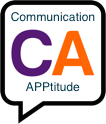 Beth Lawrence, MS, CCC-SLP[/caption]
Beth Lawrence, MS, CCC-SLP[/caption]A couple of weeks ago, we had a post on how to help students with working memory deficits. The first step is to engage the student in dialogue about how the brain works, educating them about the processes required to perform simple short-term memory tasks versus tasks requiring active engagement while "holding onto" information. In the last year or so, I have begun using a technique that may seem a little strange, but I have seen some good results! In fact, just last week, one of my students was performing a complex language processing task that relies heavily on active listening and working memory: note-taking from an orally-presented paragraph. My student said, "OH! I just have to write down the MANCALA WORDS!" That will make no sense unless I back up and tell you the technique I had introduced to him about 4 months ago, and upon which we have been building his active listening/working memory skills.
For years I have been teaching students traditional techniques, such as visualizing, chunking and self-repetition of key words. About a year ago, one of my students simply could not grasp these concepts, and he could not identify which words in the speech stream carried more "weight" than others. I knew that I had to add a kinesthetic (i.e., hands-on experience using manipulatives) component. I did not want to write the words, because I wanted him to learn the principal of how to "highlight" words in the auditory speech stream--I did not want to give him a crutch for remembering the words, as that would not help him to improve his own memory skills. I happened to have my Mancala game with me, which contains 48 small stones and a board with 12 scoops carved into it. I wanted this student to recall directions so he could successfully complete a pencil-paper task. I placed one stone in each of the scoops on the top row of the Mancala board to represent each word in my utterance. He was to select only the stones from the top that carried strong meaning, placing them in the scoops on the lower half of the board. As he added a new stone to the bottom row, he was to chunk it and add it to the previous words. So my direction, "Write the letter A in the square," became, "Write," "Write letter," "Write letter in," "Write letter in square," as he selected each stone. He left the stones for the words, "the" in the holes on the top row. When we listen, words are not uttered and "dumped," words further down the speech stream are actively added to the previous words until one has the concept in mind.
To further enhance this experience, I teach a few basic signs for prepositions as movement helps cement location words. I have the student listen for prepositions, quickly making the sign to lock that location word in. Here is a video of a recent session with a student who held onto a two-step direction using this technique. Obviously we will need to work on increasing the speed with which she processes the language, but at this stage, she needs to rely on the kinesthetic process. [wpvideo 9Qo3ha9R][wpvideo pdCvD1Om][wpvideo RP32kmTc][wpvideo tTsiqKqV]

You continue to amaze me! I especially love that you
ReplyDeleteincluded video. I also think you could become a member of some
message boards for homeschooled students. These message boards are
such a great way to get your name out because many of them have
thousands of members all over the world. I know the teachers will
find your info. so useful! I used to be a member of a few and
answered questions about reading and math. Below is a link for
yahoogroups. I typed "homeschool parent group" and received a lot
of hits. Notice that most of them have thousands of members. There
are most probably yahoogroups for individual counties in MD. It
would just take an afternoon and you could find many of
them.http://groups.yahoo.com/search?query=homeschool+parents&sort=relevance
By the way, the message boards at teachers.net (mainly for
teachers) literally reach thousands of people all over the world.
The most active ones I've accessed are the grade level chatboards
and Reading/Wrting. I've also looked at Remedial Reading,
Vocabulary, Books and Literature. There are also mailrings (people
receive emails) for each grade level. Look at the top bar of the
website to join them. Below is a link that lists the "best" teacher
message boards. I have looked at all but the last one on the list.
I'm sure you could find many more in a google search.
http://thecornerstoneforteachers.com/2009/05/best-teacher-message-boards.html
There is also a monthly Teachers Gazette as part of teachers.net
They are always looking for submissions. Who knows, they may even
give you a regular
column!http://teachers.net/gazette/submit.html
Thank you, Adrienne. We appreciate your comments and support. Checking out the homeschooling sites now :)
ReplyDeleteThis is a great method. I am going to try it out with my kids. Thank you for sharing.
ReplyDeleteFiona
So glad...please keep us posted to let us know if they find it helpful! By the way, Brain Gym is SO cool! :)
ReplyDelete